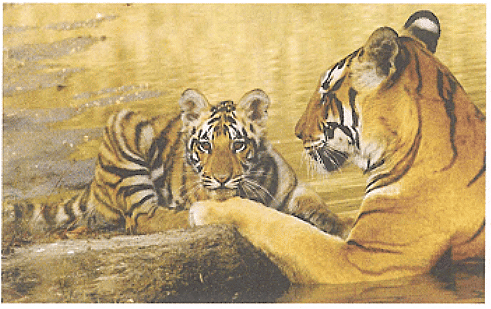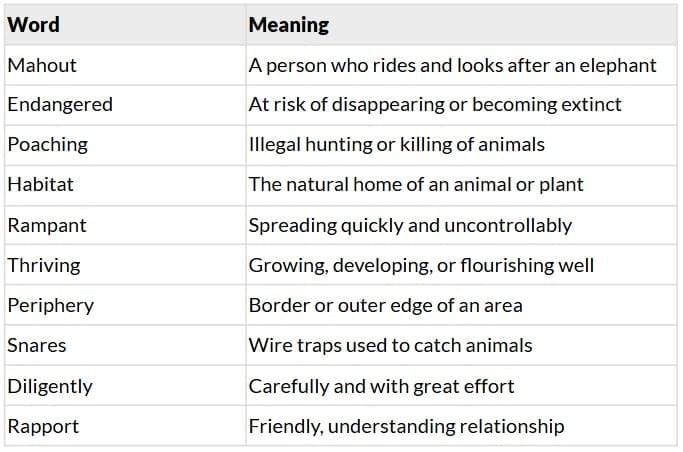Saving The Tiger Chapter Notes | Gul Mohar Class 6: Book Solutions, Summaries & Worksheets PDF Download
| Table of contents |

|
| About the Author |

|
| Detailed Summary |

|
| Moral / Message |

|
| Character Sketches |

|
| Vocabulary Table |

|
About the Author
Shekar Dattatri is an award-winning Indian wildlife filmmaker and conservationist. He has produced many films and written books and articles on wildlife and the environment. Through his work, he has spread awareness about protecting endangered species, especially tigers.
Detailed Summary
The chapter begins with the author’s first thrilling encounter with a wild tiger in Kanha Tiger Reserve, Madhya Pradesh, when he was nineteen. Sitting on a young elephant, he came face-to-face with a calm tiger that looked at him with curiosity before disappearing into the forest. This unforgettable moment inspired his lifelong career in wildlife filmmaking.
The author explains that although the tiger is India’s National Animal, it is highly endangered, with only around 3,000 left. Tigers face serious threats: poaching for skin and body parts, habitat destruction due to deforestation, and loss of prey animals that are hunted by humans. As prey becomes scarce, tigers cannot survive or raise cubs successfully.
However, the situation is not hopeless. Successful reserves like Kaziranga, Corbett, and Nagarahole have shown that strong protection measures—anti-poaching camps, patrolling, and community involvement—can help tiger numbers grow. The author stresses the importance of enforcing wildlife laws and building trust with local people to protect forests.
He concludes by reminding us that saving the tiger means saving entire ecosystems. Tiger habitats are the source of major rivers, which are vital for human life. Protecting tigers, therefore, benefits all wildlife and humans alike.
Moral / Message
- The lesson teaches us that protecting tigers is not just about saving one species but about preserving nature as a whole.
- Tigers are symbols of strength, balance, and survival. By conserving their forests, we also save countless animals, protect rivers, and secure our own future.
- Each citizen must play a role in safeguarding this natural treasure.

Character Sketches
Shekar Dattatri
Shekar Dattatri is passionate, observant, and deeply connected to nature. His career as a filmmaker reflects his love for wildlife and his determination to protect it. Through personal experiences and research, he inspires readers to care about tiger conservation.
The Tiger
The tiger is shown as majestic, calm, and powerful. Though often feared, the tiger is not naturally aggressive unless threatened. In the story, it symbolizes both beauty and vulnerability, reminding us that even strong creatures need protection.
Vocabulary Table

|
30 videos|61 docs|17 tests
|
FAQs on Saving The Tiger Chapter Notes - Gul Mohar Class 6: Book Solutions, Summaries & Worksheets
| 1. What is the main theme of "Saving The Tiger"? |  |
| 2. Why are tigers considered endangered, and what factors contribute to their decline? |  |
| 3. What role do local communities play in tiger conservation efforts? |  |
| 4. What are some effective measures taken to protect tigers and their habitats? |  |
| 5. How does "Saving The Tiger" inspire readers to take action for wildlife conservation? |  |















